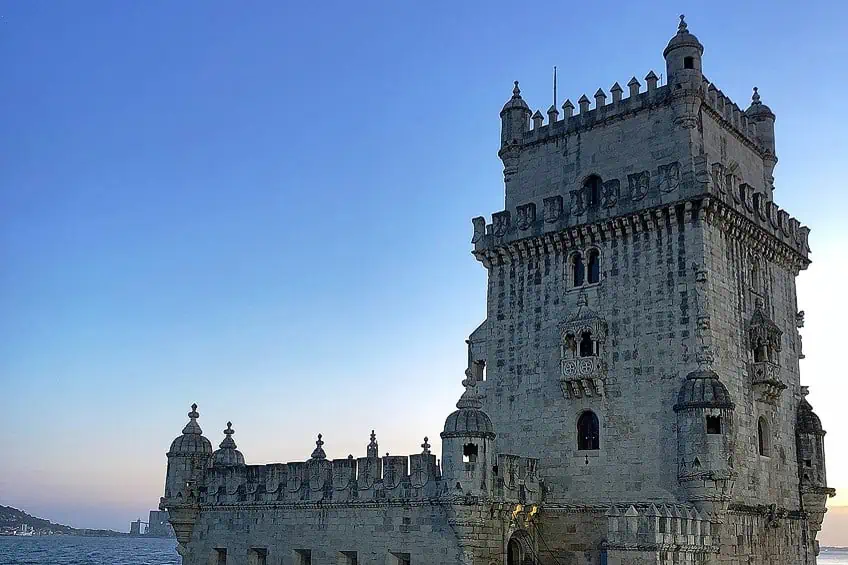Belém Tower in Lisbon – Discover the Secrets of the Belém Tower
The Belém Tower in Lisbon is a 16th-century structure located in Portugal that is considered to be one of the most exemplary forms of Renaissance architecture in the country. This article will examine a few questions about this famous fortified tower in Lisbon, such as: “Why was the Belém Tower built, when was the Belém Tower built, and where is the Belém Tower located?”. Keep reading to learn more about the Belém Tower in Lisbon!
A Look at Belém Tower in Lisbon
| Architect | Francisco de Arruda (Unknown – 1547) |
| Date Constructed | 1514 – 1519 |
| Function | Fortified tower |
| Materials Used | Limestone |
| Height | 30 meters (or 100 ft) |
| Location | Lisbon, Portugal |
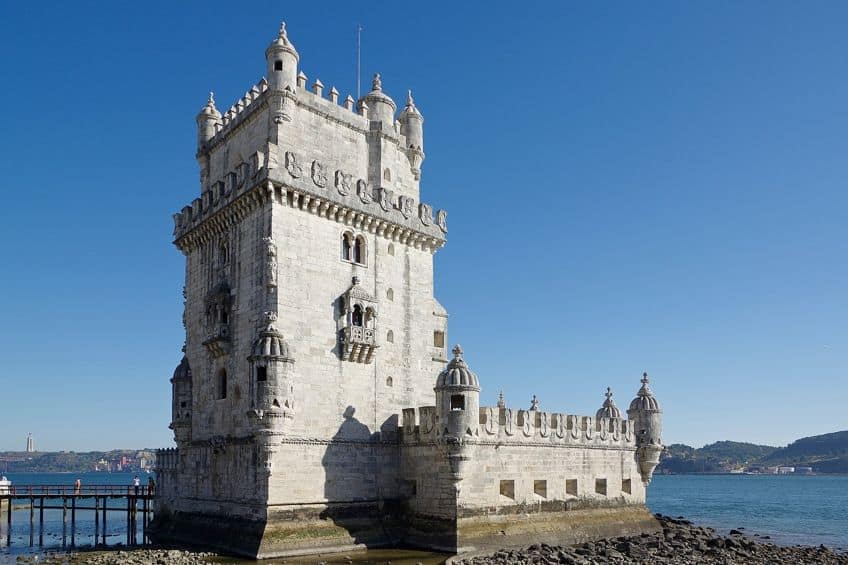
The Belém Tower, also known as the Torre de Belém, is a 16th-century tower located in the Portuguese city of Lisbon. The tower is near the water and has been used as a ceremonial departure point for those leaving the country, and it has also served the same role for those entering the city via the ocean.
It is considered to be a stunning piece of Portuguese Renaissance architecture in the style known as Manueline architecture (although it does also incorporate other styles).
The Belém Tower in Lisbon no longer serves the role it once possessed as such roles are unnecessary in the present day. It has instead become an important historical landmark and a popular tourist destination. This was ratified in the early 1980s when the Torre de Belém was declared a UNESCO World Heritage Site.
The History of the Belém Tower in Lisbon?
The earliest days of the Belém Tower in Lisbon originated in the late 15th century when King John II desired the expansion of fortifications on the Tagus River. There were already fortifications along the river, but they did not protect the mouth. However, he died before he was able to enact his plans. His successor, Manuel I, eventually decided to revisit the idea nearly two decades later.
Plans started to be drawn up for the structure to be developed, and construction was soon underway on a rocky outcrop on the river.
Throughout construction, a large battleship protected the river from any would-be attackers. King Manuel I never saw the completion of the project as he passed away shortly before it was completed, but his successor did see it finished. The Belém Tower in Lisbon would remain standing in its present form for several decades until the monarch was advised that the coastal defenses of the city needed to be revisited and repaired.
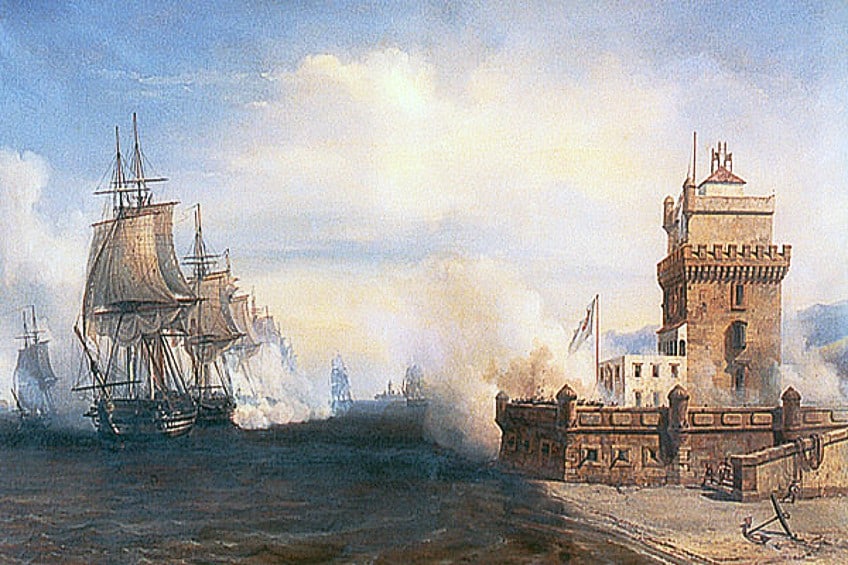
The Torre de Belém Tower was one of those sites that needed to be repaired and improved to ensure that Lisbon would remain safe. These defenses did not actually keep the city safe as the location was captured in 1580 and the dungeons of the tower were turned into a prison. There were later plans to improve on the defenses of the structure, but these never came to fruition. The tower eventually became a customs control point that was used for navigation purposes.
This was the beginning of the end of the structure’s military uses. Further improvements were eventually made, but the tower continued to be used as a customs point and dungeon.
Renovations would eventually take place in the early 19th century, but the building ultimately started to fall into some level of disrepair, especially after the introduction of a nearby gas factory that spewed smoke into the region. It was only in the mid-20th century that new renovations took place to better preserve the old Torre de Belém. A few decades later, the site became a UNESCO World Heritage Site.
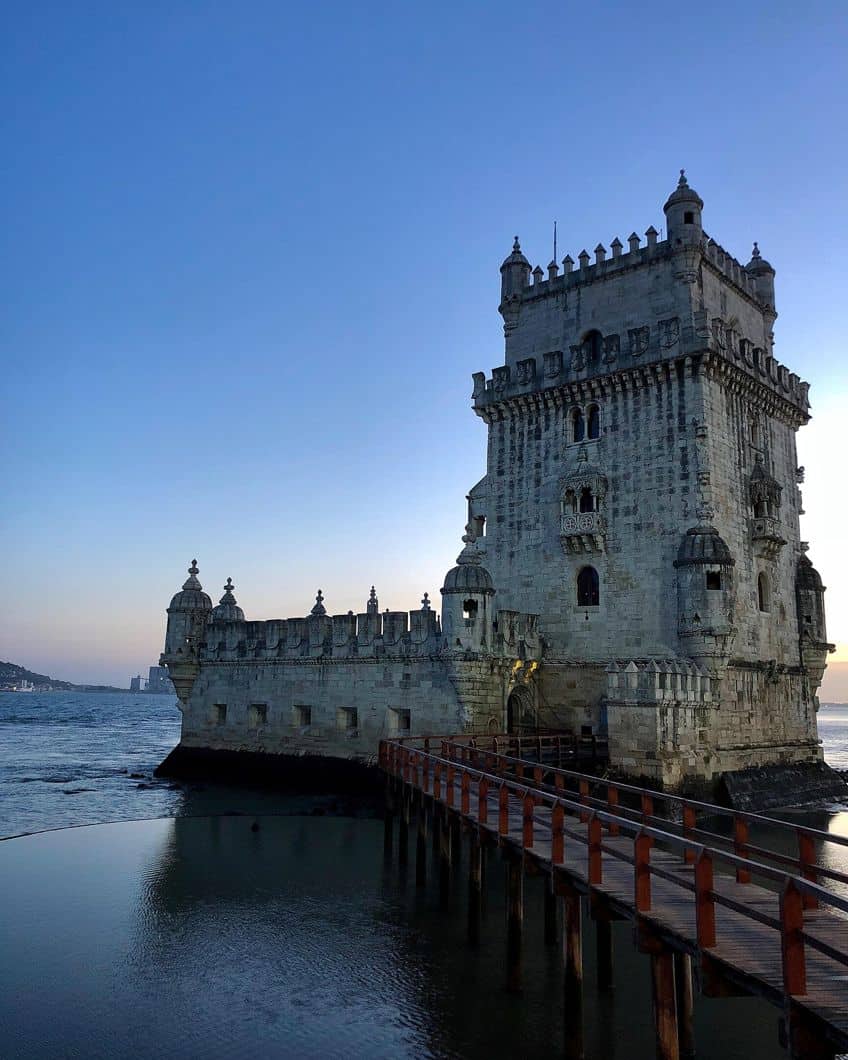
Today, the Belém Tower in Lisbon is a popular tourist destination within the city and is considered to be an important part of the architectural history of the city. It was even made part of the Seven Wonders of Portugal in 2007.
The Torre de Belém Tower may no longer serve a defensive function, but it has remained one of the most stunning pieces of Late Gothic architecture in the city.
The Architecture of the Belém Tower in Lisbon?
The Belém Tower in Lisbon was constructed as part of the development of the Lisbon shoreline, and the primary material used in its construction was a beige-white limestone that could be quarried in the region. It is also considered to be one of the most stunning examples of the Manueline style. This particular architectural style is considered to be a transitory style between the later Renaissance style and earlier Gothic architecture.
The Manueline style is characterized by its use of Christian iconography, armillary spheres, and numerous architectural elements that relate the structure to the ocean.
This style was considered to be a more militaristic style that incorporated the Portuguese view towards worldwide exploration, and the means through which exploration was done was through the many ships in the Portuguese navy. The structure of the Belém Tower in Lisbon is rectangular but includes an irregular bastion. The Torre de Belém Tower may be considered an exemplary iteration of the Manueline style, but it does also make use of other styles.
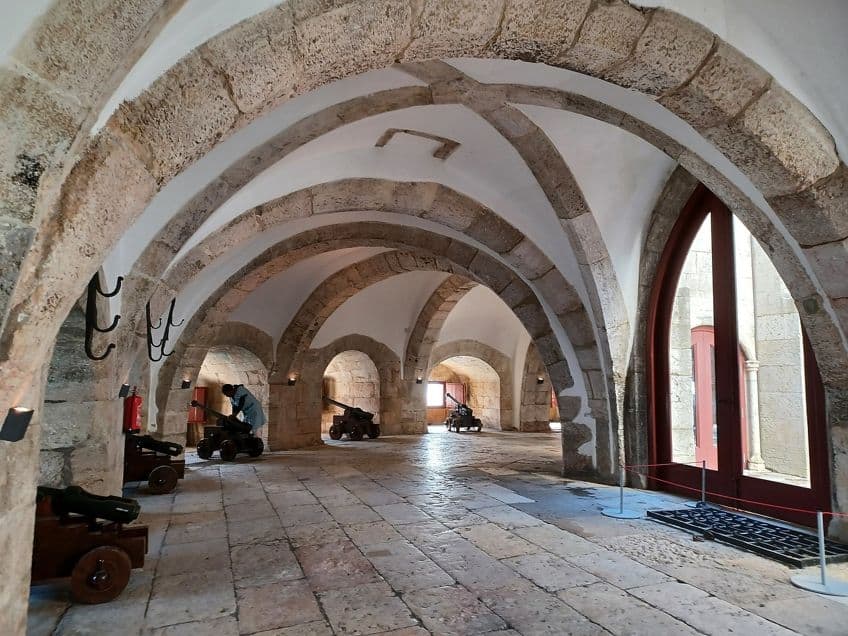
There is some influence from Moorish architecture, such as the use of more delicate decorative elements, ribbed cupulas, and balconies. However, it has gone down in history as one of the most important instances of the Manueline style, and as such, these elements can be seen as incorporated into this newer style. The tower itself is made up of four stories, and it includes various battlements.
Each of the floors includes different elements, such as a cistern on the ground floor, a veranda on the second floor, and a terrace on the top floor that is decorated with images of Order of Christ shields. That terrace allows the Belém Tower in Lisbon to have a view of the surrounding city and the Tagus River.
The Belém Tower in Lisbon is not all that tall by today’s standards and stands at about 30 m (or 98 ft), but at the time, this was more than enough to provide protection to the shoreline. However, there are openings throughout the Torre de Belém Tower that provide differing views, and different sections of the tower serve different roles. For instance, there is a large fireplace on the third floor and a fourth-floor chapel.
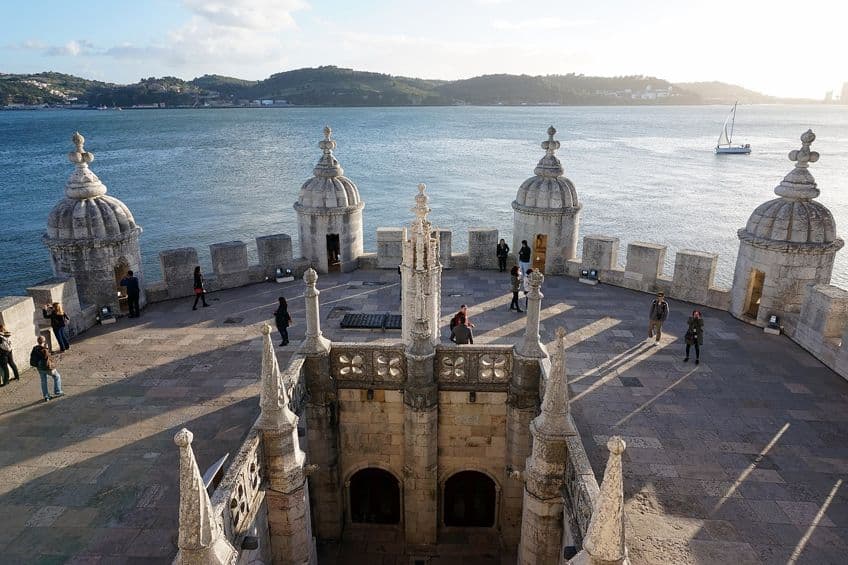
The Belém Tower in Lisbon has remained one of the most stunning instances of the Manueline style ever since it was constructed in the early-16th century. While the Torre de Belém no longer serves the role that it once served, it has withstood the test of time and remains along the banks of the river for all to see.
The Architect of the Belém Tower in Lisbon?
The Belém Tower in Lisbon was designed by Francisco de Arruda. This Portuguese architect and sculptor was a key figure in the development of the Manueline style, which was a development of an earlier Gothic style.
His most famous work is the Torre de Belém, but he was also the one in charge of the repairs performed at several other locations in the city.
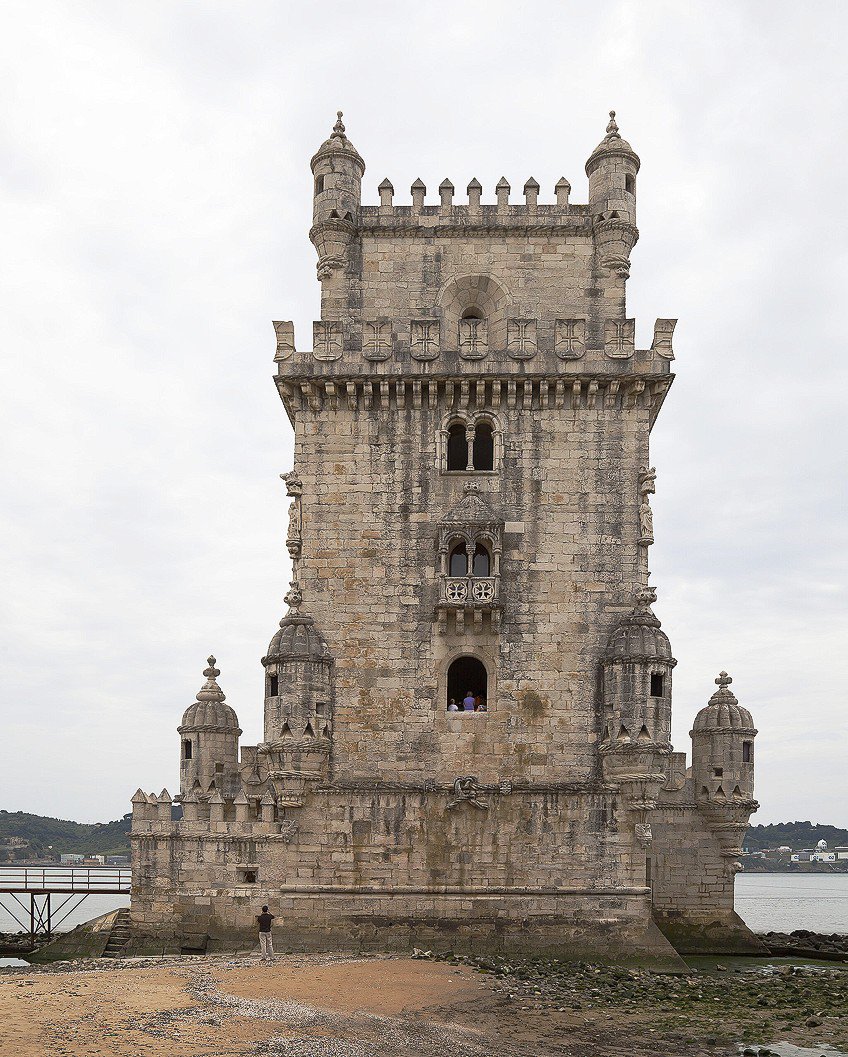
He often worked alongside his brother, Diogo, who was also an architect. After his brother passed away in 1531, he started to transition away from the earlier Manueline style and into a more Renaissance sensibility. However, he has remained known for many of his earlier buildings.
This concludes our discussion about the Belém Tower in Lisbon. This stunning example of the Manueline style has become one of the most famous sites in the city and an important part of the development of Portuguese architecture in general. Hopefully, you learned a good deal about this gorgeous piece of pre-Renaissance architecture in Portugal today. However, Lisbon contains many other stunning structures that are also worth learning about if you get the chance!
Frequently Asked Questions
What Is Belém Tower?
Belém Tower is a 16th-century structure in Portugal that can be found alongside the coast. The structure has served as an important part of the history of architecture in the country and as an important historical site too. The Torre de Belém was used as a ceremonial entryway and departure point from the city throughout its early existence. Today, it has become a tourist destination.
Where Is the Belém Tower Located?
The Belém Tower is located in Lisbon, but in more specific terms, it can be found beside the Tagus River. It forms part of the parish of Santa Maria de Belém. The region can be easily reached through public transport, and the tower itself is located across a bridge.
Why Was the Belém Tower Built?
The Belém Tower in Lisbon was constructed as a fortification that was meant to protect the city from any potential attacks that came from the river. It was also used as a ceremonial point for entry and exit from the city. However, its function as a fortification means that the initial purpose would have been defensive in nature, even if its later role became a more ceremonial one.
When Was the Belém Tower Built?
The Belém Tower in Lisbon was constructed between 1514 and 1519, and this places it in the early stages of the Portuguese Renaissance. The Torre de Belém Tower was constructed in an earlier style than the later Renaissance architectural style that would become more common in the city and country.
What Is the Architectural Style of the Belém Tower?
The Belém Tower in Lisbon makes use of a Manueline style, which is a form of Late Gothic architecture. This style would serve as a more transitional period between the earlier Gothic styles and the later Renaissance style. The Manueline style is characterized by its use of more maritime elements, such as sea-based motifs, natural forms, and semicircular arches.
Justin van Huyssteen is a writer, academic, and educator from Cape Town, South Africa. He holds a master’s degree in Theory of Literature. His primary focus in this field is the analysis of artistic objects through a number of theoretical lenses. His predominant theoretical areas of interest include narratology and critical theory in general, with a particular focus on animal studies. Other than academia, he is a novelist, game reviewer, and freelance writer. Justin’s preferred architectural movements include the more modern and postmodern types of architecture, such as Bauhaus, Art Nouveau, Art Deco, Brutalist, and Futurist varieties like sustainable architecture. Justin is working for artfilemagazine as an author and content writer since 2022. He is responsible for all blog posts about architecture.
Learn more about Justin van Huyssteen and about us.
Cite this Article
Justin, van Huyssteen, “Belém Tower in Lisbon – Discover the Secrets of the Belém Tower.” artfilemagazine – Your Online Art Source. August 21, 2023. URL: https://artfilemagazine.com/belem-tower-in-lisbon/
van Huyssteen, J. (2023, 21 August). Belém Tower in Lisbon – Discover the Secrets of the Belém Tower. artfilemagazine – Your Online Art Source. https://artfilemagazine.com/belem-tower-in-lisbon/
van Huyssteen, Justin. “Belém Tower in Lisbon – Discover the Secrets of the Belém Tower.” artfilemagazine – Your Online Art Source, August 21, 2023. https://artfilemagazine.com/belem-tower-in-lisbon/.


